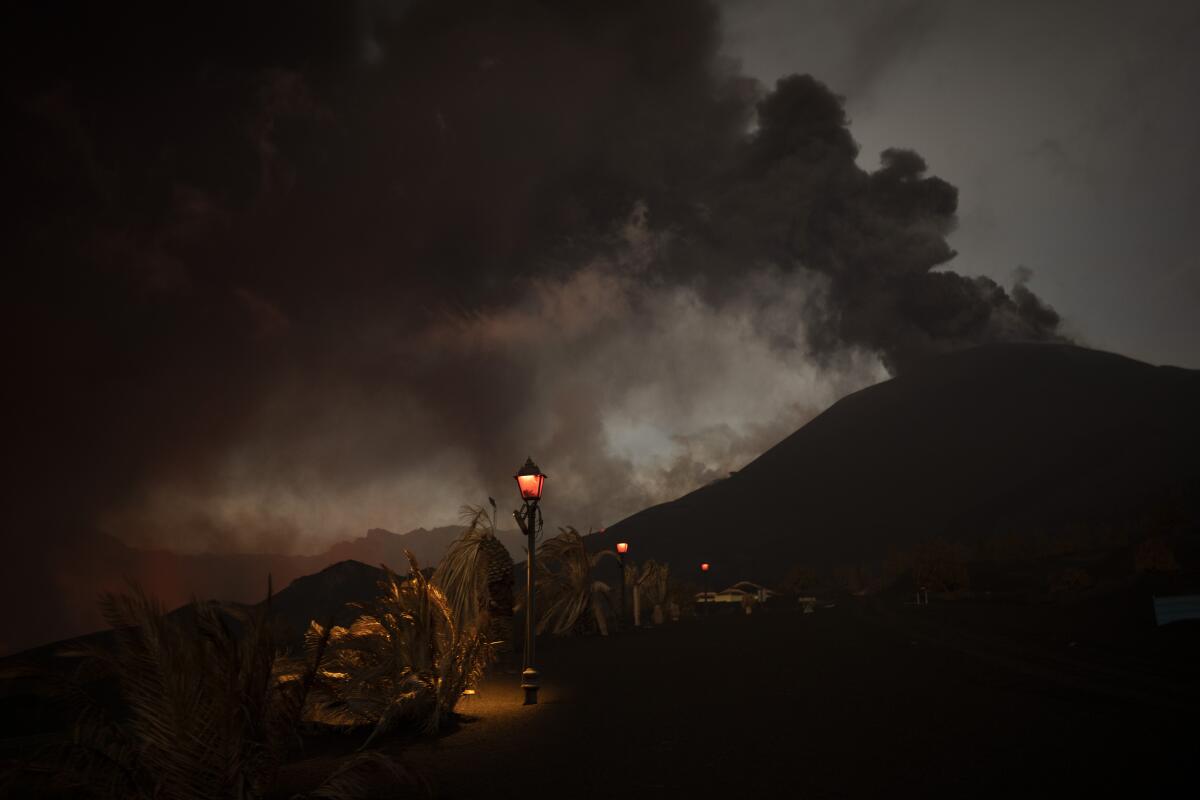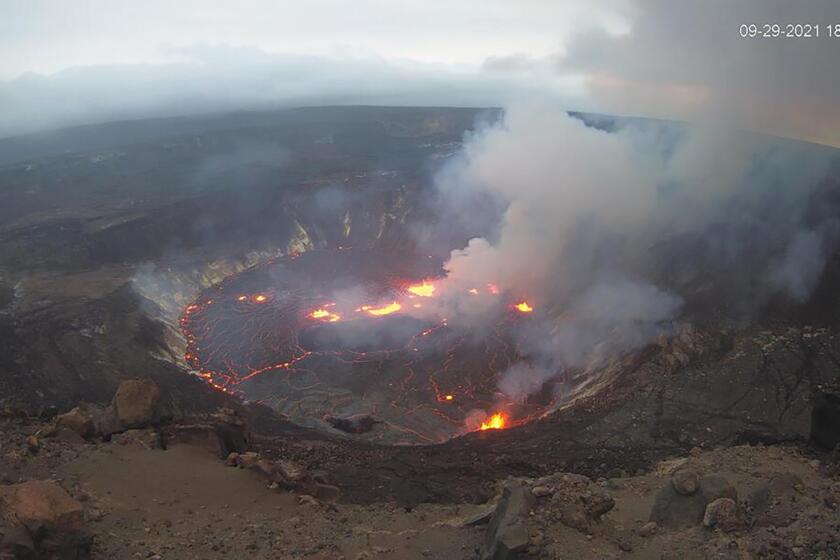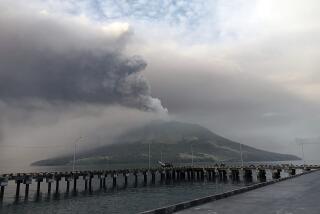After three months, Canary Islands volcano eruption may finally be over

- Share via
MADRID — Residents on the Spanish island of La Palma dared to hope Wednesday that a volcanic eruption is over after almost three months of unnerving daily explosions, earthquakes, rivers of molten rock and a huge ash plume containing toxic gases.
The Cumbre Vieja volcano in the Canary Islands off northwest Africa fell silent Monday evening, and scientists said its 36 hours or so of negligible activity might signal the beginning of the end of the eruption.
Scientists don’t rule out a resurgence of volcanic activity, which abated before only to return with renewed force, but say it is unlikely.
“We cannot be 100% sure, as the volcano has been playing a few tricks over the last weeks,” Valentin Troll, a geology expert with Sweden’s Uppsala University and co-author of a geology study of the Canary Islands, told the Associated Press.
“But many parameters have now subsided, and I think the volcano is indeed in decline now,” he said.
The Canary Islands government said in a statement that “volcanic activity has fallen to almost nothing.” Some wisps of white smoke floated from the crater Wednesday morning.
Scientists say the surface of Spain’s La Palma island is continuing to expand as lava from a volcano flows into the Atlantic Ocean and hardens.
Sustained levels of low activity must be observed for 10 days for scientists to formally declare the end of the eruption, María José Blanco, a volcanologist and spokeswoman for Spain’s National Geographic Institute, told reporters.
The eruption, which began Sept. 19, is the longest on record on La Palma and has been a milestone for islanders, many of whom live from farming and tourism. The volcanic Canary Islands are a popular European vacation destination because of their mild climate.
No injuries or deaths have been directly linked to the eruption, and life has continued largely as normal on most of the island of around 80,000 residents. However, several thousand people were forced to abandon their homes, and a section of La Palma’s southwestern side is severely damaged.
For some locals, relief at the weakening eruption was tempered by frustration at government promises of help that they say has failed to materialize.
Kilauea, one of the most active volcanos on Earth, is erupting again on Hawaii’s Big Island, sending clouds of gas into the air.
“Being able to see the sun properly for the first time in nearly three months, sleeping at night without tremors, totally changes the picture,” Francisco Javier López, a 61-year-old resident of the village of Todoque, said.
“But the future remains bleak,” he said.
López lost his home of the last 30 years during the first few days of the eruption and says he is living in an overpriced rental apartment in a nearby village.
The future of his paragliding business, which employed him and his wife, also evaporated as lava buried the takeoff and landing strips at the top of the Cumbre Vieja mountain range.
Start your day right
Sign up for Essential California for the L.A. Times biggest news, features and recommendations in your inbox six days a week.
You may occasionally receive promotional content from the Los Angeles Times.
López complained that, despite pledges of free accommodation, subsidies and financial aid from national, regional and local officials, almost nothing has actually reached the hands of La Palma residents affected by the volcano.
“The volcano has taken away our houses, including our past and memories,” he said. “But politicians are taking away our future and our hope.”
Fiery molten rock flowing from Cumbre Vieja down toward the sea has destroyed around 3,000 buildings. The fields of thick black hardened lava have entombed banana plantations, ruined irrigation systems and cut roads.
The hardened lava covers about 3,000 acres, according to data collated by the Canary Islands volcanic emergency unit, PEVOLCAN.
Where the molten rock has poured into the Atlantic Ocean, rocky deltas have formed over 120 acres, PEVOLCAN said.
More to Read
Sign up for Essential California
The most important California stories and recommendations in your inbox every morning.
You may occasionally receive promotional content from the Los Angeles Times.














